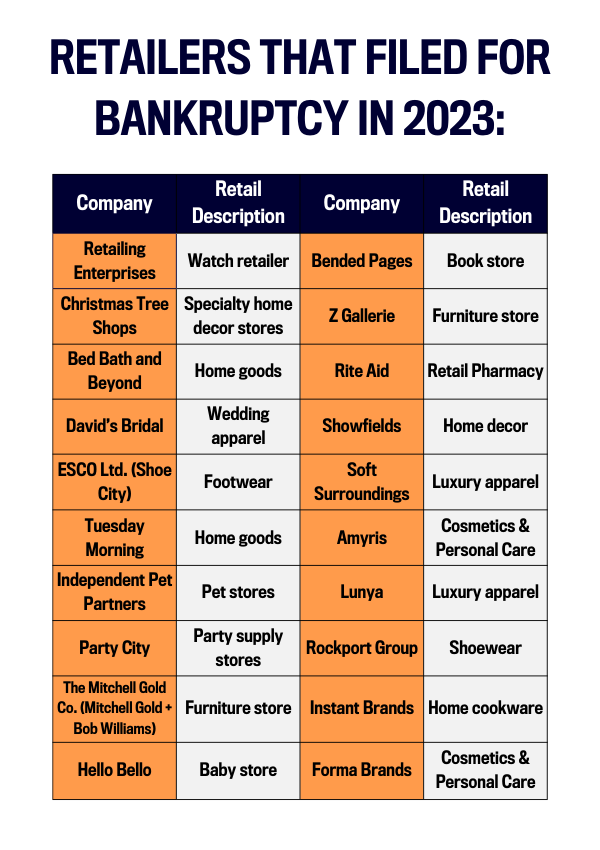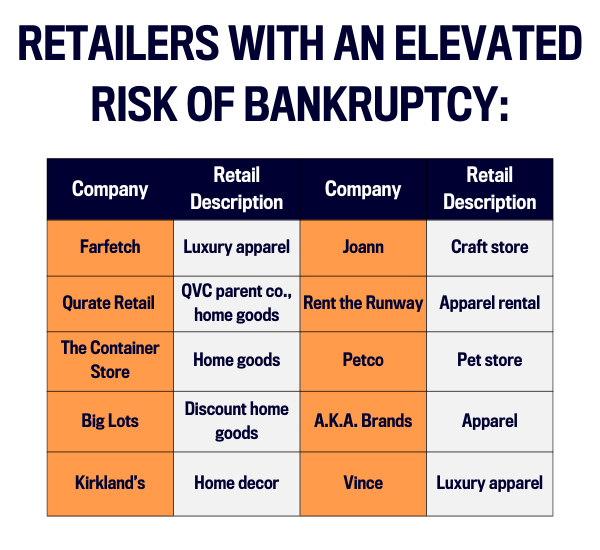2023 was a year of extremes for the retail industry.
While major retailers like Amazon and Walmart raked in billions in profits and others frantically tried to hire, 80,000 retail workers lost their jobs in the wake of corporate cost-cutting measures and retail bankruptcies. In fact, the retail industry logged the second-highest number of layoffs in 2023, a 274% increase from 2022.
Retailers blamed supply chain issues, labor shortages, and even organized crime syndicates as the source of their financial distress. Ultimately, it was short-sighted financial schemes implemented by company executives — stock buybacks, debt refinancing, and overexpansion — that left retailers vulnerable to higher interest rates. The cheap debt companies had been binging on for over a decade was no longer available. As is usually the case, workers paid the price when the debt came due.
In total, twenty retailers sought bankruptcy protection in 2023. These include well-known national chains like Party City, Bed Bath and Beyond, Rite Aid, and Tuesday Morning. Highly leveraged companies were particularly at risk of default, as higher interest rates raised the cost of borrowing money.
Retailers that sold non-essential goods, such as furniture, luxury apparel, and cosmetics, accounted for nearly one-third of bankruptcy filings in 2023 as they struggled to adapt to consumers’ new, post-COVID spending habits. However, in contrast to 10 years ago, companies could no longer rely on cheap debt to continue operating while they figured things out.

Party City was one of the first major retailers to file for bankruptcy in 2023. The publicly traded company seemed financially stable before 2020 but the pandemic hit Party City hard as people canceled events and minimized holiday celebrations and other festive gatherings. In January 2023, the company filed for bankruptcy. At the time of the filing, the retailer had 823 stores under its banner and employed 16,330 full- and part-time workers. It also owned party goods suppliers that sold nearly 100% of their products to Party City.
Like many companies, Party City used borrowing schemes when interest rates were low to finance operations and pay executives. One of those schemes was a 2018 stock buyback, where the company repurchased $242 million, or 15% of its total outstanding shares. By reducing the number of outstanding shares, the buyback program increased the price per share and lined the pockets of shareholders. To fund the stock buybacks, management borrowed from a revolving line of credit, prioritizing short-term shareholder profit over long-term financial stability.
By 2022, Party City was overleveraged and saddled with $1.67 billion in debt. The retailer negotiated with loan agents to exchange existing debts for new ones at higher rates, some as high as 10% and others at a variable rate. Eventually, the company’s debt load made it impossible for it to cover the higher interest costs, and Party City filed for bankruptcy.
Several retailers made headlines in 2023 when they announced major layoffs in order to cut costs. Gap, CVS, and Best Buy, as well as online retailers Amazon and Chewy, announced layoffs for over 25,000 employees in 2023, mainly at the corporate level.
Shareholders rarely punish executives for mass layoffs. Instead, they reward them for “righting the ship.” For example, shortly after Amazon announced in early 2023 that it would lay off 18,000 employees, the stock began to improve from its near 5-year low. As the stock price rose, so did Jeff Bezos’s net worth.
There is optimism among analysts and the media that the Federal Reserve will begin reducing interest rates in 2024, facilitating a return to the cheap borrowing habits of the past. But not all retailers are out of the woods yet. In mid-January, Macy’s announced plans to cut 2,350 positions and close 5 more stores this year. Analysts say retailers selling non-essential, discretionary goods, particularly those selling home goods, remain at risk of default. This is partly due to declining sales following the surge in demand for home goods during the pandemic, which has since dried up.
In early October 2023, CreditRiskMonitor released its list of high-risk retailers that are showing financial stress. Based on its FRISK score, the risk monitor identified 11 retailers at risk of default.

In 2023, tens of thousands of retail workers and their families bore the brunt of poor corporate planning and decision-making. Financial blunders and missteps by company executives pushed a number of retailers into bankruptcy, resulting in store closures and mass layoffs across the country.